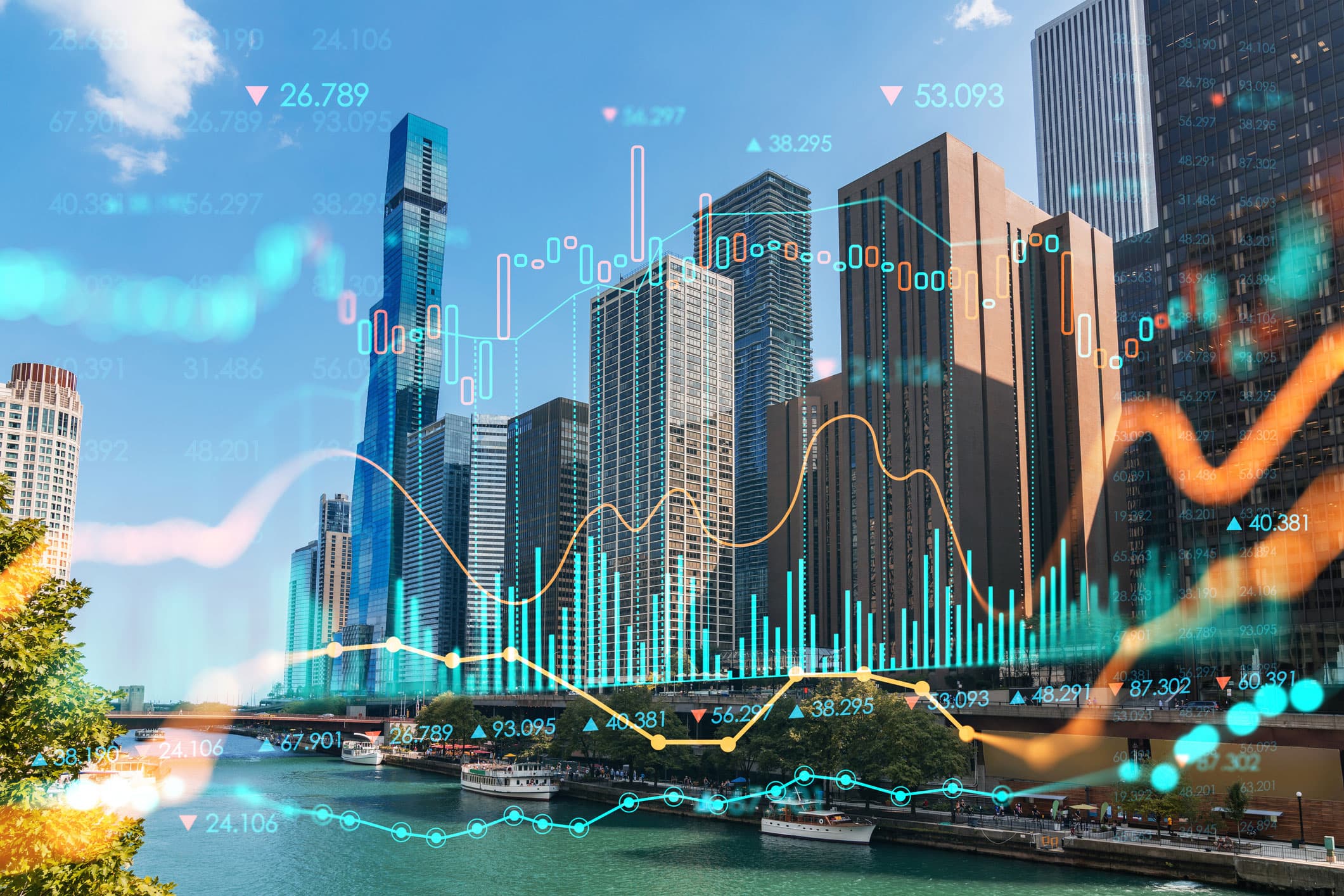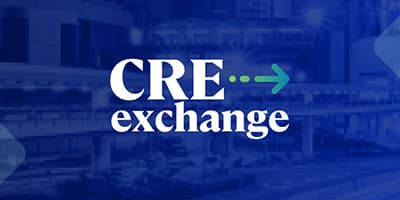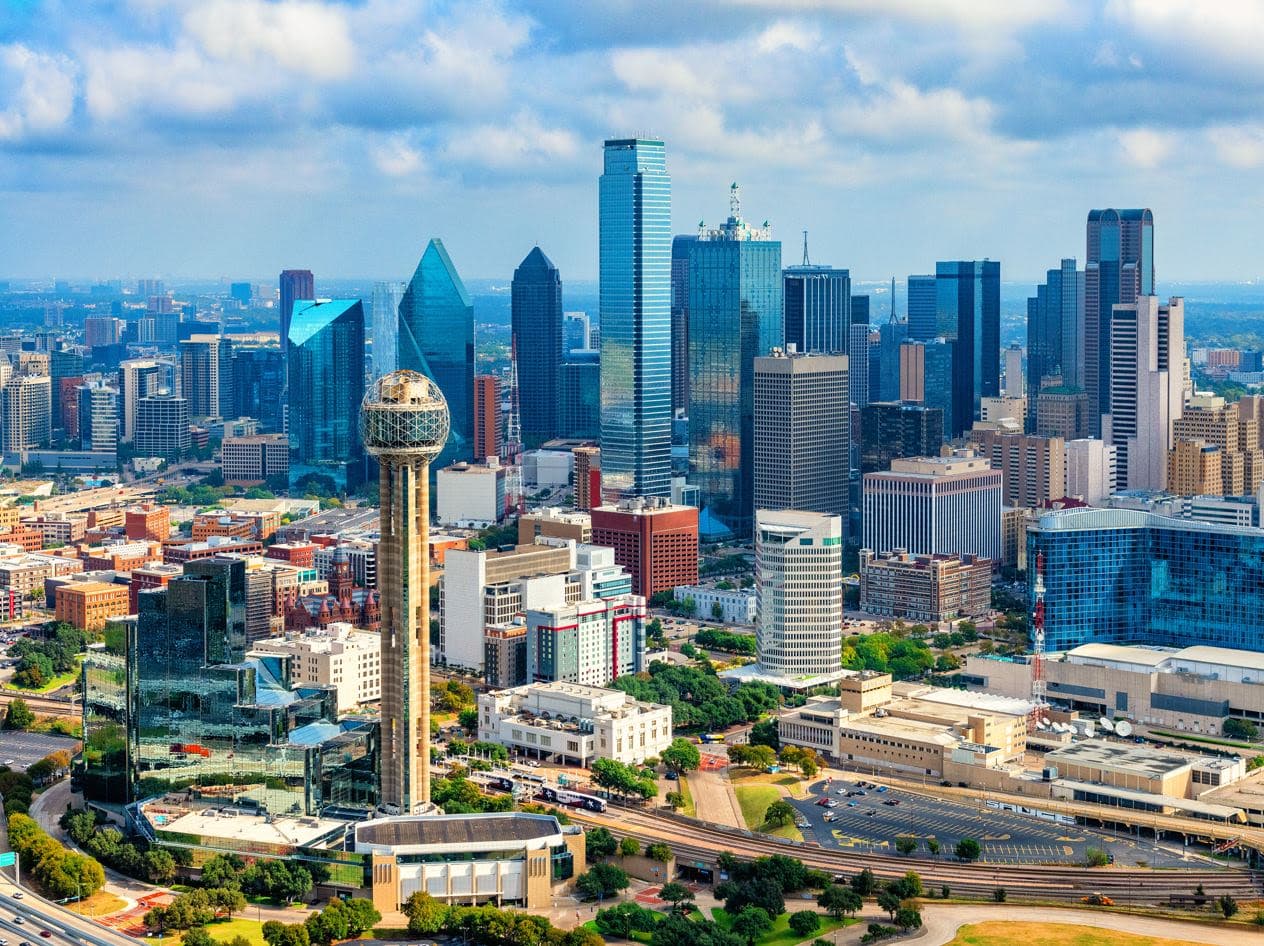Key highlights
In episode 24 of the CRE Exchange podcast, Omar Eltorai and Cole Perry were joined by notable industry influencer (and Texas commercial real estate icon), Conrad Madsen, co-founder and partner at Paladin Partners
With the growth of e-commerce and the trend of manufacturing moving back to the US, the industrial sector has become one of the most sought-after asset classes for institutional capital
Texas – Dallas Fort Worth (DFW), in particular – presents a uniquely appealing landscape for industrial, and although 2023 was an undeniably difficult year for CRE, the industrial sector in Texas still outperformed
Madsen notes that the Industrial Outdoor Storage (IOS) subsector has received a lot of attention recently, along with e-commerce and manufacturing
As the industrial sector evolves, so do occupier needs; Madsen notes that when he first entered the industry, most industrial buildings featured 24-foot clear height, but today, the trend is 40-foot
When asked about his predictions for the year ahead, Madsen admits that he has his eyes on debt maturity in 2024; however, his outlook remains cautiously optimistic
Industrial – from ugly duckling to white swan
In episode 24 of the CRE Exchange podcast, Omar Eltorai and Cole Perry were joined by notable industry influencer (and Texas commercial real estate icon), Conrad Madsen. Madsen is well known for his role as co-founder and partner at Paladin Partners out of Dallas, Texas, and brings to the table an incredible wealth of expertise relating to industrial tenant representation, development, leasing, investment, corporate services, forecasting, and so much more.
According to Madsen, his journey into the world of real estate was somewhat serendipitous, primarily shaped by familial influence and chance encounters.“My grandmother was in residential real estate growing up,” he reflects, noting that her passion for the industry gave him an early glimpse into the world of property transactions and land development. “I think she sold real estate until she was 85, so she had a long career in the residential side of things.” Following college graduation, Madsen wasn’t yet sure what he wanted to do, and initially embarked on a career as a recruiter and head-hunter. “It took me some time before I found my way,” he notes. “I tell a lot of young kids that are in college, it’s okay if you don’t know exactly where you’re supposed to be headed – just get out there and experience the world and, eventually, you’ll find your way. That’s how I ended up in commercial real estate.”
However, the first couple of years working as a commercial real estate (CRE) broker, Madsen warns, are always tough. “Rarely do you come in and have immediate success. It’s a long sales cycle, and there are a lot of relationships to be built over years or decades to gain clients, whether that’s on the tenant representation side, landlord representation side, or working capital market transactions. Nothing happens overnight.” Today, Madsen has transacted over 60 million square feet in over 150 cities across the globe, and now boasts an enormous presence in the industrial market in Texas.
“Back in the early days of my career, office was the darling,” Madsen recalls. “Office was where the big fees were, and where you saw the most demand for huge blocks of space. Despite this, the industrial world seemed more aligned with the world I grew up in – which is what brought me to this side of the industry. But over the last five to seven years, if we’re being honest, industrial has long been considered the ugly duckling.” Over time, however, the acceleration of e-commerce and the trend of moving manufacturing back to the US, the industrial sector has transitioned from the ugly duckling to the white swan. “Industrial has now become one of the most sought-after asset classes for institutional capital – 10 years ago, I never would have dreamed that.”
Is DFW the ultimate logistics hub?
Texas – Dallas Forth Worth (DFW), in particular – presents a uniquely appealing landscape for industrial. “Central time zone, no state income tax, centrally located within the US, cheaper labor, and less government restrictions to set up businesses,” Madsen explains. “All the logistic hubs meet here – all the railroads come here, and DFW airport is the second busiest commercial airport in the world. I-35 runs from north to south in the middle of the US, and then I-20, which connects the east and west coast, runs through here. All these factors make Dallas a perfect hub for logistics.”
Although 2023 was an undeniably difficult year for CRE, the industrial sector in Texas still outperformed. “We had 9,000,000 square feet of positive net absorption in Q4, to put us at 31,000,000 for the year,” Madsen shares. “This was our third-best year of all time – we even surpassed what we were doing pre-pandemic. The e-commerce and manufacturing boom is real.” According to Madsen, an almost 1.5 million square foot speculative building in South Dallas was recently leased to a Chinese solar company, called Trina Solar. “They’re planning to build a 200-million-dollar solar manufacturing facility, and now all of their suppliers and customers will look for available space around them, too.” According to Madsen, it also doesn’t hurt that Texas is located on Mexico’s front doorstep, which has transformed into a manufacturing hub thanks to cheaper labor rates and the streamlined supply chain between Mexico and the US.
Madsen notes that Paladin Partners’ success lies in going above and beyond for clients, as well as understanding sub-markets and specializing in specific areas of DFW. “Experts earn more in DFW, and in a hyper-competitive market like this one, you need to be hyper-focused,” he explains. “In a big metro like Dallas, not only do you need to specialize in an asset class – you also need to specialize in the area, and you need to look at the long game rather than just chasing single transactions.”
Emerging industrial subsectors to watch
As for subsectors within the industrial sector that are performing well, Madsen notes that Industrial Outdoor Storage (IOS) has received a lot of attention, likely due to its recent institutionalization. “That space used to be dominated by Mom-and-Pops, but now, all these institutional capital players have been entering the fold,” he explains. “I think a lot of them could be great land sites, eventually, for new industrial development. Especially if you’ve got a well-located site that’s infield, at the end of the lease, you might decide it's more valuable to go vertical and build a brand-new industrial building on it.” Madsen adds that this subsector might be a bit oversaturated and overbought; however, it ultimately depends on where it is located, and the availability.
Manufacturing is another big segment right now, Madsen notes, with developers today making sure they have significant power available to these sites. “Power is becoming more of a player, I would say, than before,” he shares. “Five years ago, if I asked economic development folks in DFW or Texas the top 10 industrial transactions they were chasing, nine out of 10 of those transactions would have been focused on logistics, like distribution centers. Today, probably 7 to 8 out of 10 of those transactions are now manufacturing. Corporate America doesn’t move quickly, but during Trump’s presidency, corporations were incentivized to move manufacturing back to the US, and the supply chain challenges that arose during the pandemic accelerated those plans.”
Of course, e-commerce is another big segment. “It used to be about 14-15% of total retail sales, and now it’s roughly 20 or 21%,” Madsen notes. “It rose pretty quickly because of the pandemic, and it captured generations – like baby boomers and older folks – that likely didn’t have a preference for online shopping before.” That being said, retail will never become 100% e-commerce; a demand for physical locations for service-related experiences will always be there. “But look at how much e-commerce could still have to grow,” Madsen adds. “What is it going to look like in another 10 to 15 years? By then, could it represent 40% of total retail?”
As the industrial sector evolves, so do occupier needs. Madsen notes that when he first entered the industry, most industrial buildings featured 24-foot clear height, and new builds were designed with 30 and 32. Later, the trend shifted to 36-foot clear height, as it allows for more cubic feet inside of a warehouse, while occupying a smaller footprint. “Industrial developers are smart,” Madsen explains. “Tenants should pay on a cubic foot, rather than the square foot, because the reality is, it costs more to build higher – there’s more infrastructure. Today, the trend is 40-foot clear height; lift trucks are more sophisticated, so we’re designed higher buildings, and building deeper truck courts.”
Looking ahead: Predictions for 2024
Looking ahead to the rest of 2024, Madsen describes his outlook as cautiously optimistic. “There are some external factors that we can’t control, like what’s going on in the Middle East and in Ukraine. But if our international situation remains stable over the next year, I’m optimistic we are going to have another good year,” Madsen explains. “Last year’s numbers were strong, and I don’t really see any reasons for things to slow down. Being here in Texas, I always say we are the last one in and the first one out of these recessionary periods.”
According to Madsen, 350 to 400 people move to DFW every single day, and that number only seems to grow each year. “It’s crazy to think, but some weeks, if I don’t see a new headquarters announcement, I feel cheated,” he admits. “That’s just how it’s been over the last few years – DFW has become the darling of so many new, huge corporate relocations and regional headquarters.” In fact, Madsen notes that Dallas is now referred to as “Ya’ll Street” as a nod to the sheer number of financial institutions that are relocating or setting up shop there.
In terms of headwinds, Madsen notes that he has his eyes on debt maturity – not necessarily on the industrial side; rather, mainly on the office side. “The reality is, most of these lenders and capital providers are cross-collateralized on all asset classes. With this in mind, the office sector could bring down other sectors from a valuation perspective.” Madsen also admits that he thinks there are more bank failures ahead, although we’ve seemingly put a band-aid on them in the meantime. “So, I think there are still some choppy waters to consider in the capital markets world. However, we just had a pretty bad capital markets world this past year, and industrial still performed unbelievably here in Texas. So, in summary, I’m cautiously optimistic. I think it could be a good year.”
Author

Altus Group
Author

Altus Group
Resources
Latest insights






